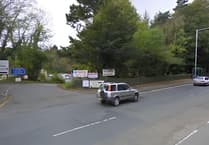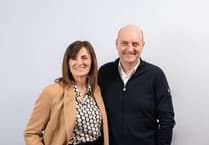The month of June is marked the world over as Pride month, a period dedicated to the celebration and commemoration of lesbian, gay, bisexual, transgender and queer (LGBTQ+) pride. This year, there will be no such event in the Isle of Man after a controversy last year. But what is Pride? Siobhan Fletcher explains its origins in the first of a five-part series.
The concept of Pride has developed dramatically in the five decades since its inception.
What is now seen as a bona fide all-singing all-dancing party in cities across the world had its origins as a series of spontaneous protests on the dirty streets of New York City in the 1960s.
Now, the first thing you need to know about the sixties in America is the fact that as a country, it was a tinderbox, just waiting to explode.
It was a decade defined by a burgeoning civil rights movement, a war being fought away in Vietnam that was equally as unpopular at home, and a countercultural movement with all the sex, drugs and rock and roll that came along with it.
In 1969, consensual sexual relations between men or between women were illegal in every US state except Illinois.
Gay people could not work for the federal government or the military, and coming out would deny you a licence in many professions including law and medicine.
WHAT WAS STONEWALL?
The Stonewall Inn was a notorious gay bar in the Greenwich Village area of New York.
The local liquor laws were interpreted in a way that meant serving alcohol to gays and lesbians could close down any licensed premises because that made the venue ‘disorderly’.
Therefore, the Mafia stepped in to run many local bars, including the Stonewall Inn, as they could charge patrons more for watered down drinks, and the safety of them paying off the authorities.
This meant the bar became a safe haven for many.
So, when the police decided to raid the popular hangout in the early hours of the morning, on June 28, 1969, the patrons of the Stonewall Inn had had enough.
Although it’s still debated to this day who threw the first metaphorical stone that night, what is clear is that the street erupted into violent protests that lasted for the next six days.
Though the Stonewall uprising didn’t start the gay rights movement, it was a galvanizing force for LGBTQ+ political activism and marked a major turning point in the United States and around the world.
It led to the formation of numerous gay rights organisations, and on the one-year anniversary of the riots on June 28, 1970, thousands of people marched in the streets of Manhattan from the Stonewall Inn to Central Park – in what was America’s first gay pride parade.
Its official chant was: ‘Say it loud, gay is proud.’
CLOSER TO HOME
To understand how Pride developed in the UK, I spoke to those who were there at the beginning – in the Gay Liberation Front (GLF).
The GLF was formed in 1970 in direct response to the Stonewall riots, with the hopes to champion revolutionary queer politics on this side of the Atlantic.
Former GLF member, artist, performer and activist Stuart Feather said: ‘Pride of course was a big demonstration to begin with.
‘It was the second time that the GLF had held a march to central London rather than a specific location for a protest.
‘The 1972 demonstration started off in Trafalgar Square and ended up in Hyde Park, where we had a party afterwards under the noses of the police who quickly disappeared when we started snogging each other in front of them.
‘It was a great sort of exciting event, and not quite so heavily policed as the demonstration the year before was. It was noisy, it was raucous, it was a very happy occasion and we had a lot of fun on it and afterwards, and definitely made our point.’
Alongside Stuart in the beginning was Andrew Lumsden, who joined the GLF in 1970. He was a journalist working at The Times on Fleet Street at the time.
He saw the group’s first demonstration advertised and went along. He joined the same week and quickly established the UK’s first legal LGBTQ+ newspaper in the form of Gay News.
He said: ‘Part of [Pride’s] purpose they declared was to be a carnival – to be out there looking happy, and encouraged and encouraging – but part of it also was a deliberate political programme of scrap the law that says men can have no sexual relations of the slightest sort below the age of 21, and even then, only in special circumstances.
‘So it was a mixture of a party and politics.’
It’s been half a century now since the pioneers of Pride first took to the streets. And it’s safe to say, for those who were there at the start, the celebrations held in their current form, do not go far enough to emulate their original goals. They believe the political elements of Pride have been diluted over time.
But what of Pride here on the Isle of Man? We’ll get into that in the coming weeks…
This is an extract from the first instalment of several articles looking at the history of Pride. Next time, the focus will turn to the Isle of Man, looking at the queer history of our Island, and the significant developments that have taken place here at home.
To hear more, the first programme is on Manx Radio’s listen again feature.
The second will be broadcast on Tuesday at 6pm.




